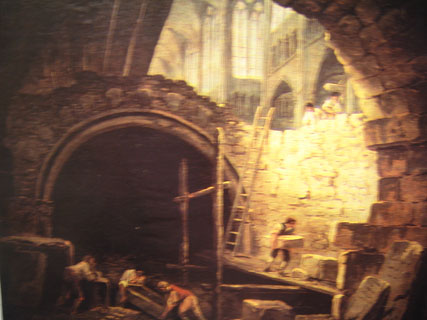The great French painter of imaginary landscapes and ruins, Hubert Robert, was born on this day in 1733. This week’s picture is one of his darkest and most dramatic works, The Violation of the Tombs of the Kings in the Basilica of Saint-Denis. It can be seen at the Musee Carnavalet in
The picture was painted in late 1793, during the French Revolution, at a time when the artist had recently been incarcerated in the prison of Saint-Lazare. Robert had neglected to renew his “carte de civisme”, or identity card, an offence for which the mandatory punishment laid down by the Law of Suspects was incarceration. He spent ten months in jail before being released without further charges in the summer of 1794. He was subsequently reinstated to a senior post on the Revolutionary committee responsible for refashioning the Louvre. But the evidence of his later works suggests that he took a sceptical and disenchanted view of the Revolution – “the most astonishing event that has hitherto happened in the world,” in the words of Hubert’s English contemporary, Edmund Burke.
The Violation of the Tombs of the Kings in the Basilica of Saint-Denis was inspired by a notorious act of desecration sanctioned by the Revolutionary government in the months shortly before Robert’s imprisonment. Ever since the declaration of the Republic, which had taken place in September 1792, there had been calls for the destruction of the royal sepulchres in the abbey of


